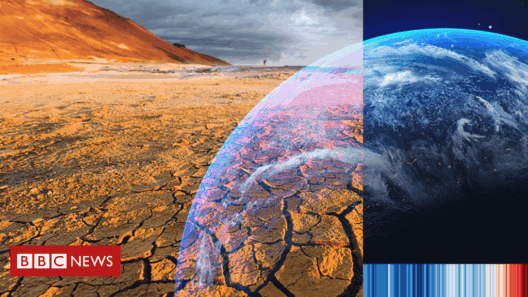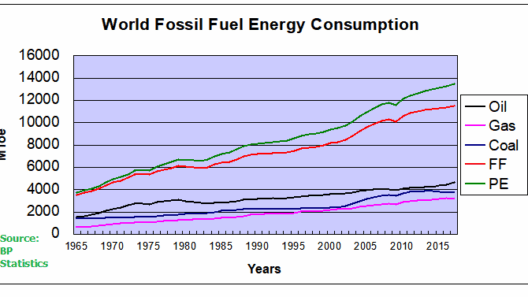Global warming stands as an undeniable existential threat, not only to the planet but also to human health. The repercussions of climate change manifest in various insidious ways, extending far beyond the immediate dangers of heatstroke and other heat-related illnesses. While heatstroke garners attention during peak summer months, it is merely the tip of an expansive iceberg that casts shadows over public health systems, exacerbates existing conditions, and invites new challenges to human well-being.
The phenomenon of global warming primarily results from the accumulation of greenhouse gases in the atmosphere, primarily carbon dioxide, methane, and nitrous oxide. These gases trap heat, leading to a rise in average global temperatures. This rise creates a conducive environment for heatwaves, which have palpable effects both physically and psychologically on the populace. As temperatures soar, vulnerable groups such as the elderly, young children, and those with pre-existing health conditions face heightened risks. However, the implications of global warming stretch far beyond immediate thermal discomfort.
One of the less-discussed aspects of climate change is its influential role in the propagation of vector-borne diseases. The warming climate alters the geographic distribution and life cycle of vectors such as mosquitoes and ticks, which transmit diseases like malaria, dengue fever, and Lyme disease. As these vectors encroach upon new territories that were previously inhospitable, populations that have never encountered these pathogens may find themselves unprotected, vulnerable, and unprepared.
Furthermore, extending the lens of inquiry, consider air quality deterioration as a consequential outcome of climate change. Increased temperatures lead to the formation of ground-level ozone, a primary component of smog. This phenomenon not only exacerbates respiratory conditions such as asthma and chronic obstructive pulmonary disease but also increases the morbidity rates among sensitive populations. The interplay of rising heat and declining air quality is a concoction that renders urban areas precarious for their inhabitants.
Moreover, climate change has a profound impact on food security, an issue often overlooked in discussions surrounding health crises. Alterations in climatic patterns yield irregular weather phenomena—droughts and floods disrupt agricultural cycles, leading to diminished crop yields. Hunger, malnutrition, and foodborne diseases become pressing issues, particularly in less economically stable regions. The psychological repercussions of food insecurity can erode mental health, engendering anxiety and depression, which further complicates healthcare responses.
It is essential to consider the socio-economic dimensions of climate-induced health crises. Communities with fewer resources are often disproportionately affected, highlighting the intersection of social justice and environmental change. Inequitable access to healthcare exacerbates vulnerabilities, making it imperative to understand the nuances of climate justice. Policies addressing climate change must extend beyond technological fixes, fostering resilience within marginalized populations through equitable access to resources and healthcare infrastructure.
Additionally, the mental health ramifications of global warming warrant serious attention. As climate events escalate in frequency and intensity, communities experience a myriad of psychological effects, including eco-anxiety, trauma from natural disasters, and existential dread concerning the future of the planet. Prolonged exposure to such stressors can lead to chronic mental health concerns, amplifying the urgency of an integrated approach to health in the context of global warming.
In light of these multifaceted health challenges, a paradigm shift is necessary. Rather than addressing health issues as isolated phenomena, an integrative approach that considers environmental determinants of health becomes paramount. Such an approach envisions a world where public health initiatives align with climate action, recognizing that decisions influencing the environment directly impact health outcomes. The concept of “One Health,” which emphasizes the interconnectedness of human, animal, and environmental health, elucidates the need for transdisciplinary strategies.
Furthermore, fostering public awareness about the health implications of climate change equips individuals with the capacity to advocate for systemic change. Education and outreach programs must center on the nexus between environmental stewardship and health. By cultivating a sense of agency and responsibility, communities can collectively mobilize to demand action from policymakers, ensuring that climate resilience becomes a priority in public health agendas.
Innovative interventions are also required to combat the health effects of climate change. From urban planning that incorporates green spaces to mitigate heat effects, to community-based programs promoting sustainable agricultural practices, creative solutions abound. Telehealth services can bolster accessibility for marginalized populations, ensuring that healthcare continues even amidst climate disruptions. The integration of technology in healthcare provision presents an opportunity to bridge equity gaps exacerbated by climate change.
In conclusion, the health crisis stemming from global warming transcends the immediate concern of heatstroke, extending into a labyrinth of interconnected issues that pose significant threats to human well-being. By adopting a comprehensive perspective that recognizes the multitude of factors contributing to health crises in the face of climate change, society can fortify its defenses against impending challenges. Embracing sustainability, equity, and innovative solutions forms the bedrock of a healthier, more resilient future—one where the impacts of climate change do not overshadow the promise of human health and longevity.







